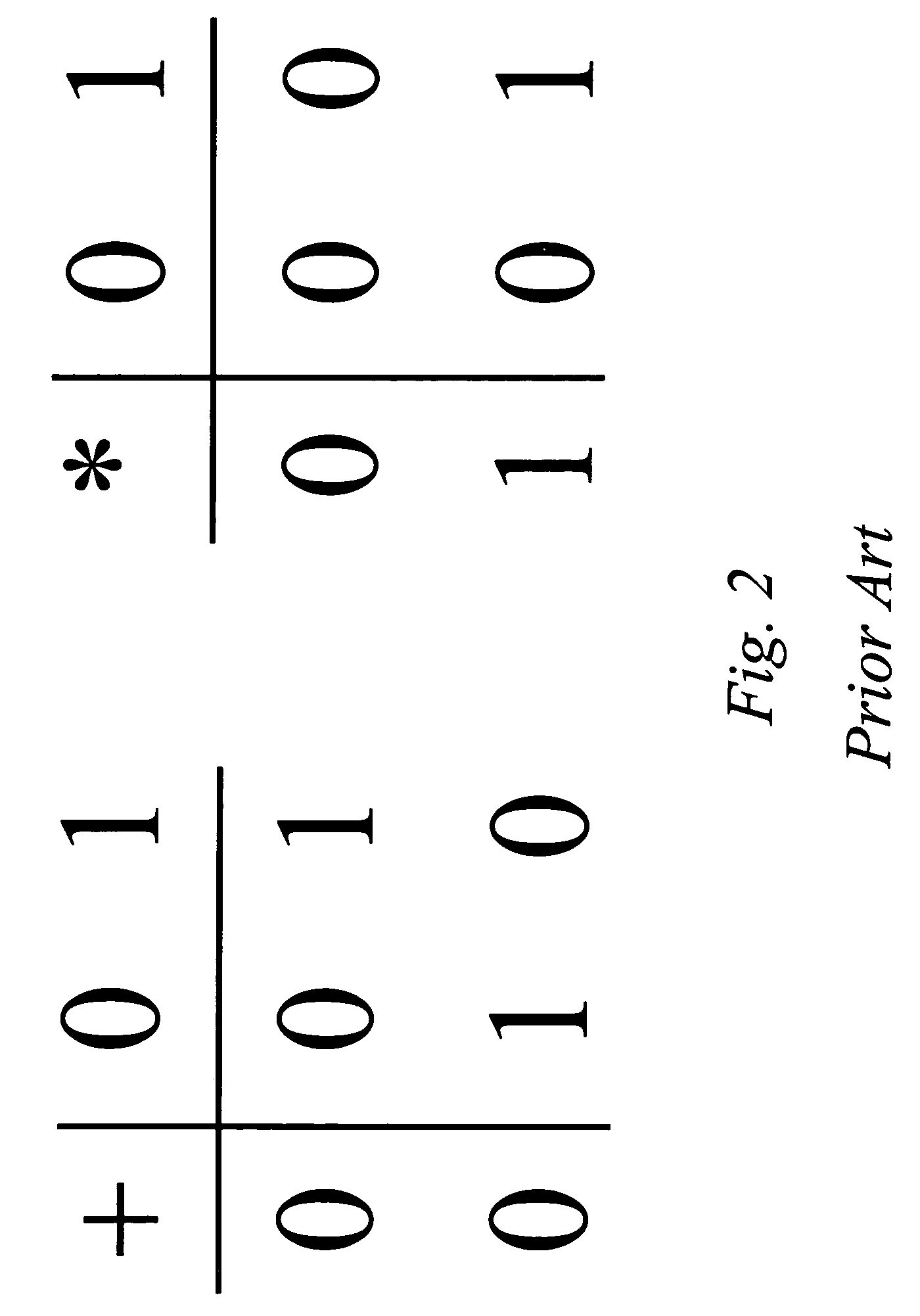Decoding Reed-Solomon codes and related codes represented by graphs
a graph and code technology, applied in the field of error-correcting codes for data storage and data transmission, can solve the problems of corrupted messages, the prior-art decoding methods of reed-solomon codes are known to be far from optimal, and the practicability of decoding error-correcting codes, etc., to achieve the lowest cost of code words
- Summary
- Abstract
- Description
- Claims
- Application Information
AI Technical Summary
Benefits of technology
Problems solved by technology
Method used
Image
Examples
Embodiment Construction
[0196]FIGS. 10 and 11 show a method for decoding a Reed-Solomon code or related code according to my invention.
[0197]FIG. 10 shows a one-time initialization procedure, and FIG. 11 shows the steps of an iterative decoding procedure.
[0198]Construct Graph for Selected Code
[0199]To begin, I construct 1010 a fast sparse transform factor graph (FSTFG) 1011 for a code 1001. The code can be a Reed-Solomon code, extended Reed-Solomon code, punctured Reed-Solomon code, or other FSTFG codes. A fast sparse transform factor graph is describe in detail below.
[0200]In the preferred embodiment, I use the well known [N,k,d]q Reed-Solomon code such that the block length N is a power of two, or an extended Reed-Solomon code such that the block length is a power of two, or a punctured Reed-Solomon code based on a Reed-Solomon code that has a block length that is a power of two, or some other FSTFG code that has a block length that is a power of two. I call this preference the “power of two” preference....
PUM
 Login to View More
Login to View More Abstract
Description
Claims
Application Information
 Login to View More
Login to View More - R&D
- Intellectual Property
- Life Sciences
- Materials
- Tech Scout
- Unparalleled Data Quality
- Higher Quality Content
- 60% Fewer Hallucinations
Browse by: Latest US Patents, China's latest patents, Technical Efficacy Thesaurus, Application Domain, Technology Topic, Popular Technical Reports.
© 2025 PatSnap. All rights reserved.Legal|Privacy policy|Modern Slavery Act Transparency Statement|Sitemap|About US| Contact US: help@patsnap.com



